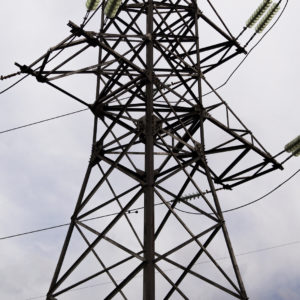A group of House Republicans is looking for answers from federal energy regulators two years after an independent commission committed to investigating potential threats to the electricity grid.
Two dozen lawmakers from coal-intensive states sent a letter to the Federal Energy Regulatory Commission (FERC) asking for a status update on the Grid Reliability and Resilience Pricing and Grid Resilience in Regional Transmission Organizations and Independent System Operators docket.
Commissioners voted to seek comments from grid operators after rejecting a rulemaking from the U.S. Department of Energy in early 2018 that would have subsidized struggling coal and nuclear plants.
In September 2017, U.S. Energy Secretary Rick Perry ordered FERC to consider a rulemaking that would have provided short-term to provide cost recovery to power plants that kept at least a 90-day supply of fuel on hand, which is done only by coal and nuclear plants. Oil and gas industries as well as renewable energy generators opposed the action, which the Department of Energy said was necessary for national security. The five-member FERC board unanimously rejected the order, instead giving grid operators 60 days to answer questions about improving the power system’s resilience, but the letter notes that it “appears to have taken no other formal action since that time.”
Hailing mostly from coal-heavy states like West Virginia, Illinois, Kentucky, Ohio, and Pennsylvania, the Republican lawmakers want to know what progress FERC has made on the docket, what the next steps are the commission will take “to address grid resilience,” and the timeline for these actions.
A spokeswoman said the commission would respond directly to the Members and does not publicly comment on correspondence.
“Fuel-secure sources of electricity are vital for grid resilience and reliability because they are less vulnerable to fuel supply disruptions,” the lawmakers wrote. “Yet, fuel-secure coal and nuclear plants are continuing to close at an alarming rate while the Commission waits to act.”
The Republican letter notes that in about the same period that FERC was supposed to be gathering comments from grid operators, 23,000 megawatts of coal-fired electric has shut down. In July, West-Virginia based Revelation Energy LLC, one of the largest coal producers in the country, filed for bankruptcy. Last month, another one of the country’s largest coal miners, Murray Energy, based in eastern Ohio, also filed for bankruptcy. Growing reliability of renewable energies like wind and solar plus low prices for natural gas are putting coal companies in increasingly precarious positions.
FERC rejected the Department of Energy’s initial rulemaking last year arguing that it had not sufficiently made the case that grid reliability or security was at stake. A spokesman for the largest trade association representing the natural gas and oil industry said the case still isn’t being made.
“The letter points to the retirements of coal and nuclear plants since 2017, but does not actually point to any resilience or reliability issues that have accompanied these retirements,” said Dustin Meyer, director of Market Development for the American Petroleum Institute. “It also does not address the more than 24 [gigawatts] of new, dispatchable natural gas combined cycle capacity that the U.S. will have by the end 2019 – on top of major additions of smaller natural gas-powered technologies, and growth of renewable energy generation capacity.”
The head of the Kentucky Coal Association, though, said the differences between it and coal as baseload power sources make natural gas less reliable.
“When you talk about resiliency of the grid, natural gas is more volatile,” said association President Tyler White. “We believe that have a baseload power source such as coal, one that we know is reliable and resilient will give the grid the security it needs if and when something occurs.”
Four House Republicans from Kentucky signed the letter, and White added that there’s disappointment throughout the industry with the lack of action at FERC.
With forecasts calling for another severely cold winter, Jason Bostic, vice president of the West Virginia Coal Association, said the low prices of natural gas can be misleading.
“There are extreme price spikes when you need it the most,” he said, noting that extreme weather events over the last five years have resulted in natural gas supply disruptions. “We don’t think FERC is moving quickly enough to address this problem of reliability and resilience. There may be another extreme event where there’s not enough capacity. There’s a cascade effect on larger regions than what’s served by a single power plant.”
The head of the American Council on Renewable Energy, which opposed Perry’s initial efforts to prop up coal and nuclear plants, castigated efforts to subsidize “uneconomic … plants under the guise of grid resiliency.”
“The proposed rulemaking cited in this letter was built on a faulty premise and unanimously rejected by FERC for very sound reasons,” said council President Gregory Wetstone. “Numerous studies have demonstrated how renewable energy increases electric system reliability, while lowering carbon emissions and saving consumers money. If we’re going to get serious about enhancing grid resilience, we should focus on modernizing our nation’s antiquated electric grid and accelerating the transition to renewable energy.”

